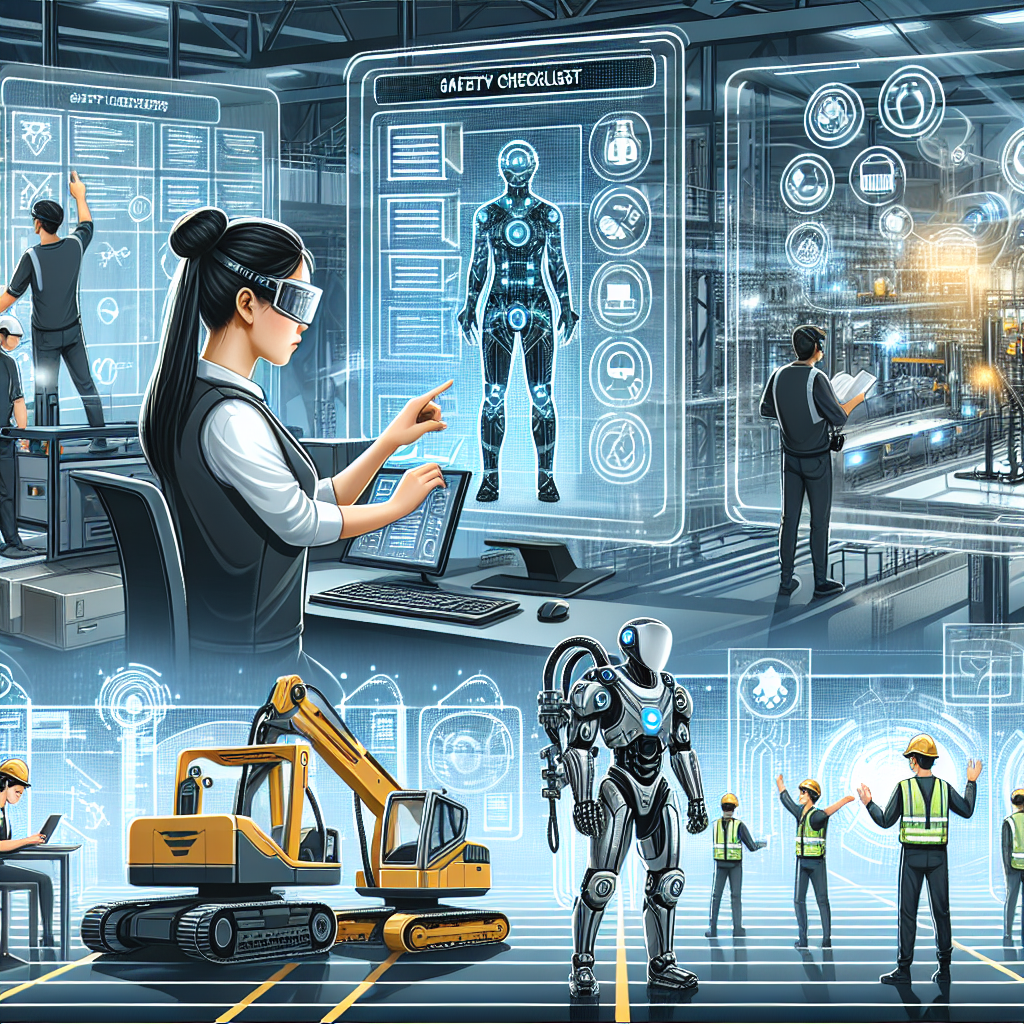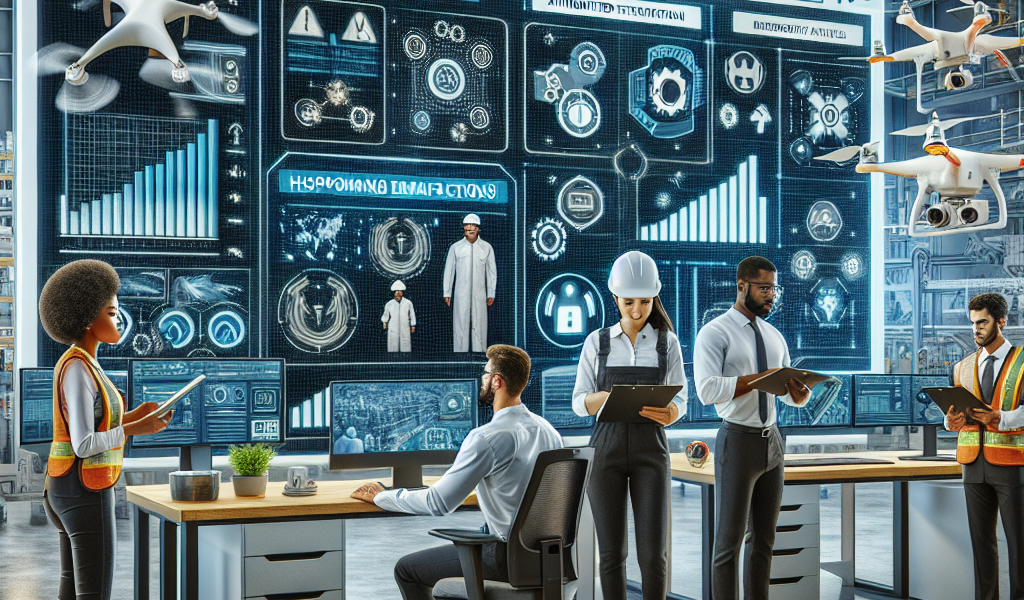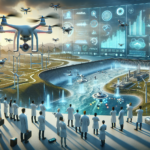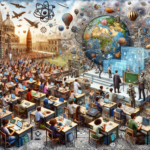-
Table of Contents
“Empowering Safety: Harnessing Technology for a Secure Workplace”
Introduction

The Role of Technology in Enhancing Workplace Safety
In the modern workplace, the integration of advanced technology has become pivotal in ensuring the safety and well-being of employees. From sophisticated monitoring systems to innovative safety equipment, technology plays a crucial role in mitigating risks and preventing accidents. The advent of wearable devices, real-time data analytics, and automated machinery has revolutionized traditional safety protocols, providing more efficient and effective solutions. These technological advancements not only help in identifying potential hazards but also in implementing proactive measures to address them. As a result, organizations are able to create safer working environments, reduce injury rates, and comply with regulatory standards more effectively. The continuous evolution of technology promises further enhancements in workplace safety, making it an indispensable component of modern occupational health and safety strategies.
Implementing IoT Devices for Real-Time Hazard Monitoring
In recent years, the integration of technology into workplace safety protocols has revolutionized how companies monitor and mitigate hazards. One of the most significant advancements in this area is the implementation of Internet of Things (IoT) devices for real-time hazard monitoring. These devices, which can range from wearable sensors to environmental monitors, provide a continuous stream of data that can be analyzed to prevent accidents and ensure a safer working environment.
The adoption of IoT devices in the workplace begins with understanding their potential to transform safety practices. Traditional methods of hazard monitoring often rely on periodic inspections and manual reporting, which can leave gaps in safety coverage. In contrast, IoT devices offer a proactive approach by continuously collecting data on various parameters such as temperature, humidity, gas levels, and worker movements. This real-time data collection allows for immediate detection of anomalies that could indicate potential hazards, enabling swift intervention before an incident occurs.
Moreover, the integration of IoT devices into workplace safety systems is not just about data collection; it’s also about data analysis and actionable insights. Advanced analytics and machine learning algorithms can process the vast amounts of data generated by these devices to identify patterns and predict potential risks. For instance, if a wearable sensor detects that a worker’s body temperature is rising rapidly, it could signal the onset of heat stress, prompting immediate action to prevent heat-related illnesses. Similarly, environmental sensors can detect the presence of toxic gases and trigger alarms, ensuring that workers evacuate the area promptly.
The benefits of implementing IoT devices for real-time hazard monitoring extend beyond immediate safety improvements. These devices also contribute to long-term safety planning and compliance. By maintaining a comprehensive record of safety-related data, companies can conduct thorough investigations of incidents, identify root causes, and develop strategies to prevent future occurrences. Additionally, this data can be invaluable for meeting regulatory requirements and demonstrating compliance with safety standards, thereby reducing the risk of legal liabilities and enhancing the company’s reputation.
However, the successful implementation of IoT devices in the workplace requires careful planning and consideration. One of the primary challenges is ensuring the reliability and accuracy of the data collected. This involves selecting high-quality devices, regularly calibrating sensors, and maintaining robust communication networks to prevent data loss. Furthermore, companies must address privacy concerns, particularly when using wearable devices that track workers’ movements and health metrics. Clear policies and transparent communication with employees are essential to ensure that data is used ethically and that workers feel comfortable with the monitoring systems in place.
Another critical aspect is the integration of IoT devices with existing safety management systems. This often involves collaboration between IT and safety departments to ensure seamless data flow and effective use of the insights generated. Training employees to understand and respond to the information provided by IoT devices is also crucial. Workers need to be aware of how to interpret alerts and take appropriate actions, which can be facilitated through regular training sessions and drills.
In conclusion, the implementation of IoT devices for real-time hazard monitoring represents a significant leap forward in workplace safety. By providing continuous, accurate data and enabling proactive risk management, these devices help create safer working environments and contribute to the overall well-being of employees. As technology continues to evolve, the potential for further enhancements in workplace safety is immense, promising a future where accidents are minimized, and workers can perform their duties with greater confidence and security.
Utilizing AI and Machine Learning for Predictive Safety Analytics
In recent years, the integration of artificial intelligence (AI) and machine learning into workplace safety protocols has revolutionized how companies approach the well-being of their employees. These advanced technologies are not just futuristic concepts but practical tools that are already making a significant impact. By leveraging AI and machine learning, businesses can now predict potential hazards before they occur, thereby preventing accidents and ensuring a safer working environment.
One of the most compelling applications of AI in workplace safety is predictive analytics. This involves using historical data to forecast future incidents. For instance, machine learning algorithms can analyze patterns from past accidents, near-misses, and even minor safety violations to identify trends that might not be immediately obvious to human observers. By recognizing these patterns, companies can implement proactive measures to mitigate risks. This predictive capability is particularly valuable in industries such as construction, manufacturing, and mining, where the stakes are high, and the margin for error is slim.
Moreover, AI-powered systems can continuously monitor workplace conditions in real-time. Sensors and IoT (Internet of Things) devices collect vast amounts of data on various parameters such as temperature, humidity, and equipment performance. Machine learning models then process this data to detect anomalies that could indicate potential safety issues. For example, if a machine starts operating outside its normal parameters, the system can alert maintenance teams to address the problem before it leads to an accident. This real-time monitoring not only enhances safety but also improves operational efficiency by reducing downtime.
In addition to predictive analytics and real-time monitoring, AI and machine learning are also being used to enhance training programs. Traditional safety training often relies on static materials and periodic sessions, which may not be sufficient to keep employees fully informed about the latest safety protocols. AI-driven platforms can offer personalized training experiences that adapt to the individual needs of each employee. These platforms can assess an employee’s current knowledge level and provide targeted content to address specific gaps. Furthermore, virtual reality (VR) and augmented reality (AR) technologies can simulate hazardous scenarios in a controlled environment, allowing employees to practice their responses without any real-world risk.
Another significant advantage of utilizing AI and machine learning in workplace safety is the ability to analyze unstructured data. This includes text from incident reports, emails, and even social media posts. Natural language processing (NLP) algorithms can sift through this data to extract valuable insights that might otherwise go unnoticed. For example, if multiple employees report feeling unsafe in a particular area of a facility, the system can flag this for further investigation. By incorporating feedback from various sources, companies can gain a more comprehensive understanding of their safety landscape.
While the benefits of AI and machine learning in enhancing workplace safety are clear, it is essential to address potential challenges as well. One concern is data privacy. Companies must ensure that the data collected for safety purposes is handled responsibly and in compliance with relevant regulations. Additionally, there is the issue of employee acceptance. Workers may be wary of new technologies, fearing that they could be used for surveillance rather than safety. Transparent communication and involving employees in the implementation process can help alleviate these concerns.
In conclusion, the role of technology in enhancing workplace safety is becoming increasingly prominent, with AI and machine learning leading the charge. By harnessing the power of predictive analytics, real-time monitoring, personalized training, and unstructured data analysis, companies can create safer and more efficient work environments. As these technologies continue to evolve, their potential to transform workplace safety will only grow, making them indispensable tools for any forward-thinking organization.
Enhancing Employee Training with Virtual Reality Simulations
In recent years, the integration of technology into workplace safety protocols has revolutionized how companies approach employee training. One of the most promising advancements in this area is the use of virtual reality (VR) simulations. These immersive experiences offer a unique and effective way to prepare employees for real-world scenarios, significantly enhancing their ability to respond to potential hazards.
Virtual reality simulations provide a controlled environment where employees can practice handling dangerous situations without the risk of actual harm. This is particularly beneficial in industries such as construction, manufacturing, and emergency services, where the stakes are high, and mistakes can be costly. By immersing employees in realistic scenarios, VR allows them to develop critical skills and muscle memory that are essential for their safety and the safety of those around them.
Moreover, VR simulations can be tailored to address specific challenges and risks associated with different job roles. For instance, a construction worker might use VR to practice navigating a high-rise building site, while a firefighter could simulate a rescue operation in a burning building. This level of customization ensures that training is relevant and directly applicable to the tasks employees will face in their daily work.
Another significant advantage of VR training is its ability to provide immediate feedback. In a virtual environment, employees can make mistakes and learn from them without any real-world consequences. This instant feedback loop helps to reinforce correct behaviors and rectify errors quickly, leading to a more effective learning process. Additionally, trainers can track performance metrics and identify areas where further improvement is needed, allowing for a more personalized and targeted approach to training.
The use of VR in employee training also addresses the issue of engagement. Traditional training methods, such as lectures and written materials, can often be dry and fail to capture the attention of participants. In contrast, VR simulations are interactive and engaging, making the learning experience more enjoyable and memorable. This increased engagement can lead to better retention of information and a deeper understanding of safety protocols.
Furthermore, VR training can be more cost-effective in the long run. While the initial investment in VR technology may be significant, the ability to reuse simulations and train multiple employees simultaneously can result in substantial savings over time. Companies can also reduce the need for physical training facilities and equipment, further cutting costs.
The COVID-19 pandemic has underscored the importance of remote training solutions, and VR has proven to be a valuable tool in this regard. With travel restrictions and social distancing measures in place, many organizations have turned to virtual training to ensure that their employees remain well-prepared and safe. VR allows for consistent training delivery regardless of geographic location, making it an ideal solution for global companies with a dispersed workforce.
In conclusion, the adoption of virtual reality simulations in employee training represents a significant leap forward in enhancing workplace safety. By providing realistic, customizable, and engaging training experiences, VR helps employees develop the skills and confidence needed to navigate hazardous situations effectively. As technology continues to advance, it is likely that VR will become an increasingly integral part of safety training programs, ultimately leading to safer workplaces and better-prepared employees.
Conclusion
The role of technology in enhancing workplace safety is pivotal, as it introduces advanced tools and systems that significantly reduce risks and improve overall safety standards. Innovations such as wearable safety devices, real-time monitoring systems, and automated machinery help in identifying potential hazards, ensuring compliance with safety regulations, and providing immediate responses to emergencies. Additionally, data analytics and machine learning algorithms enable predictive maintenance and risk assessment, further preventing accidents before they occur. Overall, the integration of technology in workplace safety protocols not only protects employees but also enhances productivity and operational efficiency.





